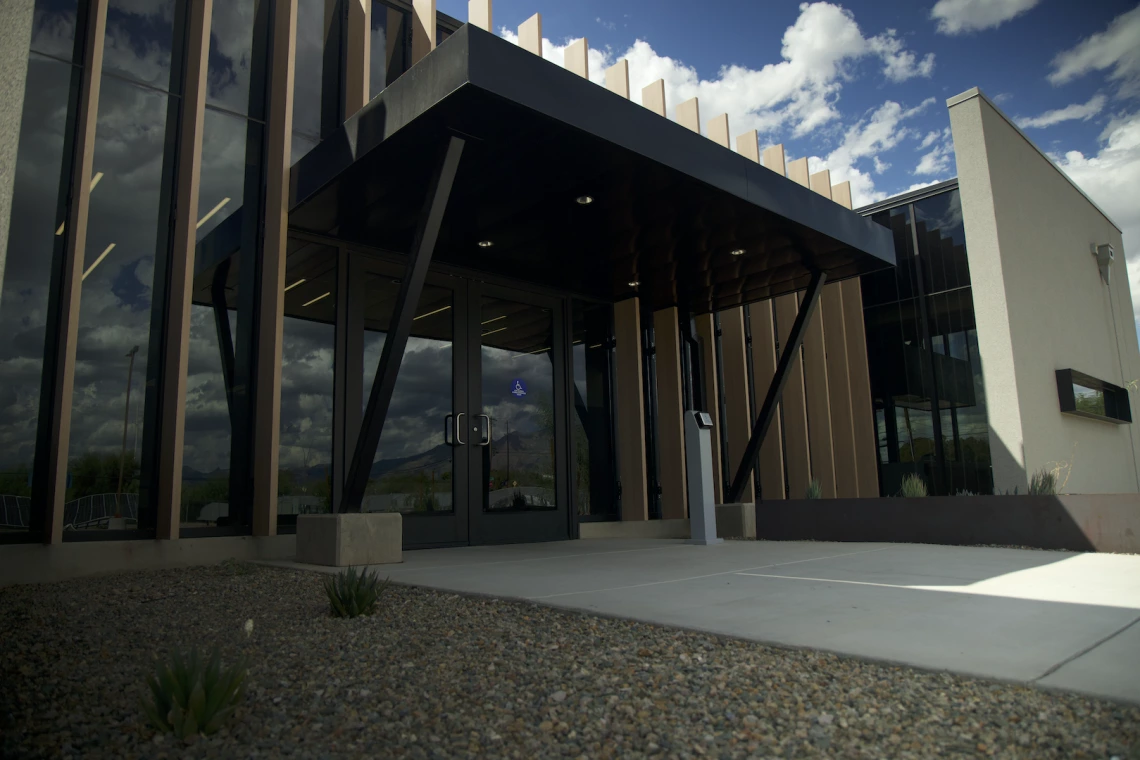Reopened Food Product and Safety Laboratory gives students next-generation training following $10.9M makeover
The three-year, state-funded renovation resulted in upgrades to the lab’s physical space, technology and ability to serve students and stakeholders.

Alejandro Davalos
After three years of renovations, the Food Product and Safety Laboratory is back. And according to Duane Wulf, an associate professor in the School of Animal and Comparative Biomedical Sciences (ACBS) and director of the Arid Lands Animal Production Initiative, the $10.9M makeover enables the facility to better serve both students and producers.
“What we have now is a state-of-the-art teaching and research facility,” he said. “It has a higher capacity than any other university in the country and gives more opportunities for U of A students, which is our first and foremost mission.”
The USDA-inspected meat processing facility serves as a center for animal sciences programs in ACBS and the Arizona Experiment Station. The state-funded facility upgrades – the first since the lab opened in 1988 – improve food and worker safety and allow greater capacity to serve regional clients from the animal agriculture industry.
Improvements include expanded areas for the popular Wildcat Country market, as well as chill, frozen and dry storage, classrooms and lab space, and value-added meat production. The renovations also added a new main entrance reception area, a demonstration and teaching kitchen, an ingredients storage and prep room, and a lecture hall. The upgraded facility now has new refrigeration equipment and state-of-the art machines for grinding, slicing, curing and packaging.
“This facility is a great example of the University of Arizona meeting its land grant mission,” said ACBS director D. Scott (Scotty) Merrell. “We were only able to renovate and expand because of stakeholders and the state realizing the importance of the facility and the activities there. We provide instruction to students that runs the gamut from humane animal handling to safe processing practices, to the effects of nutrition on meat quality, to marketing the products for sale in our market.”
Wulf, who worked closely with U of A Planning, Design and Construction throughout the project, said he had input on everything down to the smallest details, including door swing direction and light fixtures to ensure maximum efficiency for teaching, research and processing.
“It was exciting and challenging, and a great opportunity for us to modernize the entire facility,” he said.
Arizona Experiment Station interim director Brett Blum said the renovations elevate the Food Product and Safety Lab to one of the most advanced facilities of its kind in the country and make it a nexus for multiple programs across the College of Agriculture, Life and Environmental Sciences and the AES.
“This enables the U of A not only to be at the forefront of technology and innovation in animal sciences, but also to demonstrate and lead with modern care and best handling practices,” he said.
According to Blum, the upgraded lab will also help connect the dots in livestock programming across the state, including the V Bar V Ranch, the Experiment Station ranch in Yavapai County.
“We’re not looking at the facility in isolation, but instead at how we leverage it to showcase and bolster statewide U of A livestock programming,” he explained. “This approach provides opportunities for teaching and research from artificial insemination and genetic work to herd, range and natural resource management.”
“Technology has changed so much since 1988,” Merrell said. “Being able to expand and renovate the Food Product and Safety Lab has allowed us to bring it into the current century, so we’re very excited.”
